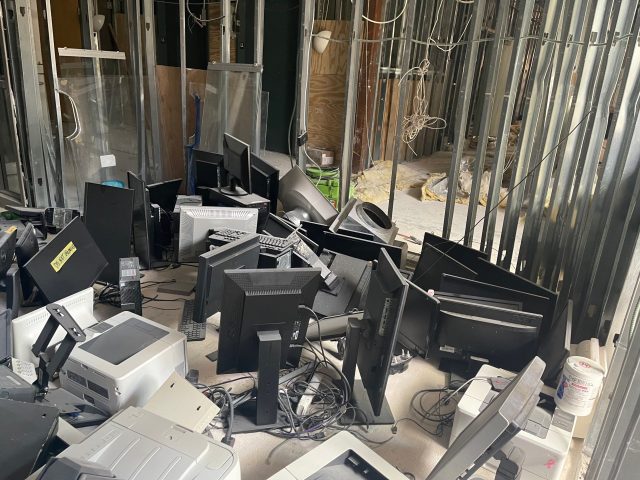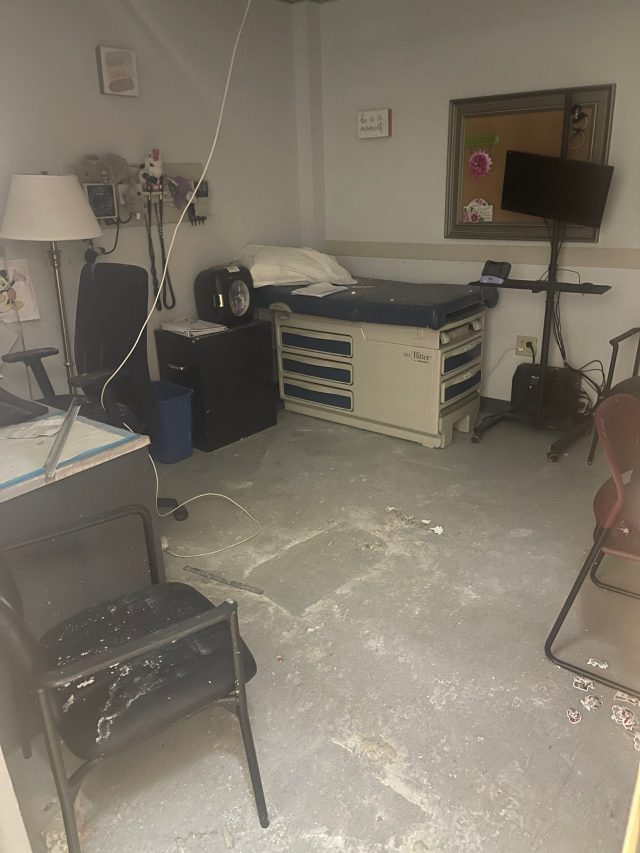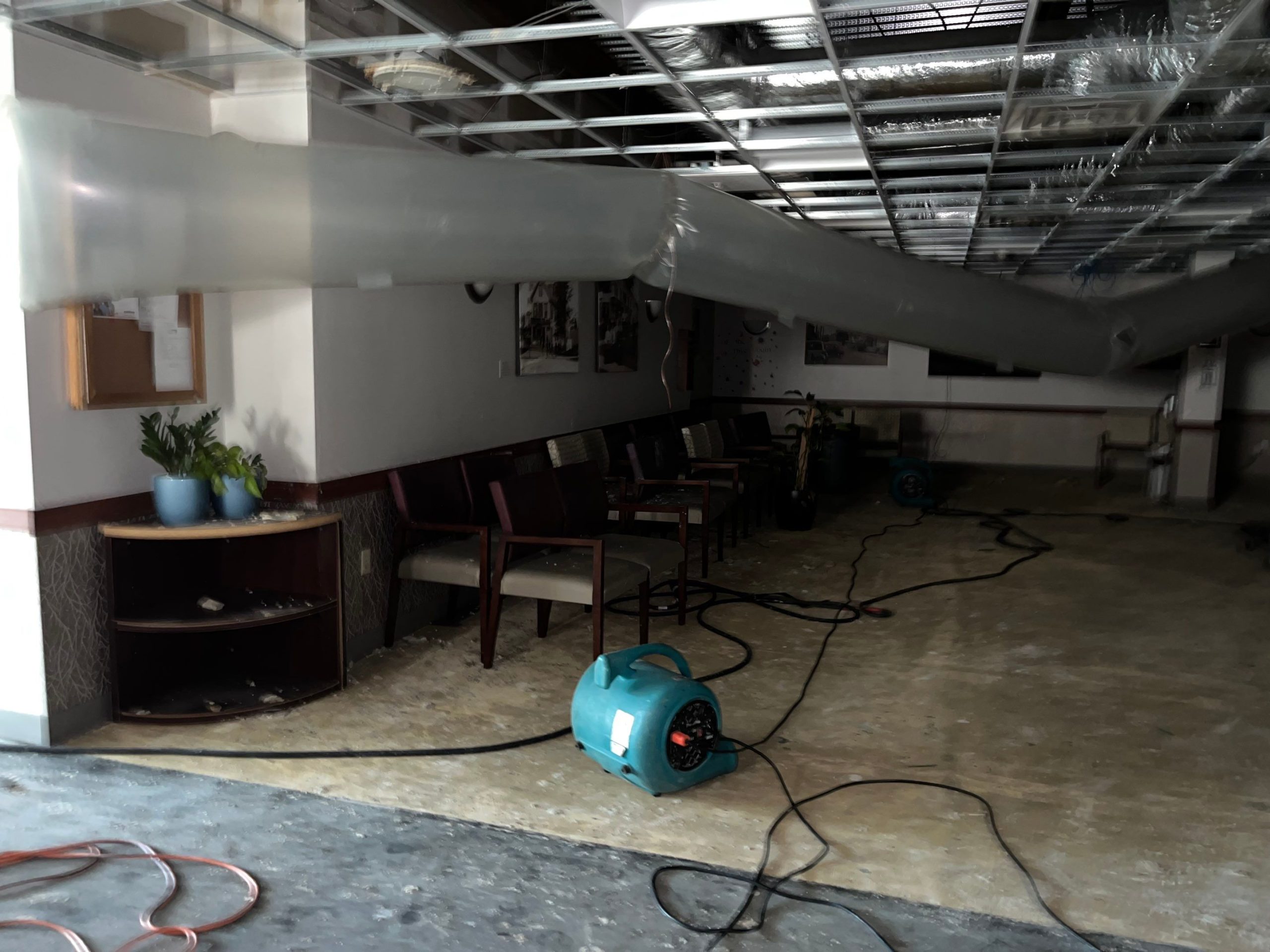When a fire raged through a building that housed an array of medical practices in Derry, NH last year, the insurance industry paid attention. One of the tenants in the first and lower levels of the building was a business that owned both the Derry Medical Center (DMC) and Derry Imaging Center (DIC). Unfortunately, they sustained extensive water and smoke damage. The ownership group retained SMW as their public adjuster to handle what would likely be a sizable claim.
DMC was a large medical practice: it had more than 30 exam rooms, as well as numerous procedure rooms, nurse stations, provider offices, and supply closets. DMC also had a general lunchroom, common areas, and a spacious reception area.
How to manage a claim of that size?
We went on site and conducted a walk-through of the practice space, and then started the critical phase: a detailed inventory. We started with one of the “typical” exam rooms, which we subsequently used as a model for the other 29 exam rooms. The inventory noted “standard” items in each room, and then adjusted accordingly for any uncommon (“unique”) items that may appear in only one or two exam rooms.
Inventory took many days. Our team divided and conquered to get it done. With several SMW staffers on site doing inventory, we collaborated with the insurance carrier’s salvor to produce a ‘joint inventory’ for shared use.

Once we were done with the inventory, we had to price items and get supporting documentation. Attention to detail was required to blend the fieldwork with the administrative side. SMW staff members typed up our lists and transcribed them while managing dozens of rooms. Excellent coordination and communication was paramount.
We met regularly with the ownership team. Sometimes we focused on IT equipment; other times we discussed medical equipment. These regular meetings – whether in person or on Zoom – helped get this substantial claim prepared and submitted in a timely manner. Having the close cooperation of the ownership team helped ensure our claim was well substantiated, making it easier to negotiate with the insurance company. We had everything the carrier needed to review it.
An additional step we took was to meet with their controller to get the necessary documents so both the Business Interruption (BI) and Extra Expense claims could be prepared. In this case, the insurance company did not want to pay the BI claim as it related to one piece of equipment. Eventually, we were able to prove to them that it was covered by showing that even though the practice group didn’t own the equipment, it was part of their revenue stream.
There were some other bumpy moments. It turned out their MRI machines were rented, which made the lost revenue relating to these machines a part of the BI claim. We also reviewed the other office and medical equipment to determine whether or not they were leased or owned by the practice. This was necessary to know what we were claiming.

Another challenge involved the remediation company, which needed expedited access for demolition, and to remove insulation and debris. This time-sensitive requirement put us on an unusually tight timeline for finishing. That made things so fast-paced that the SMW team would literally talk strategy while driving to the site each day to do inventory. The finish time meant that planning and figuring out the best way to attack it was essential.
Amidst this time crunch, we had to manage the complex process of helping a very large medical practice relocate and set up a temporary workspace elsewhere so they could continue treating their loyal patients. Not to mention – it was boiling hot the entire time.
That was just DMC. For DIC, we needed an equipment expert to price the MRIs, ultrasounds and X-ray machines used by the DIC team. Initially, the insurance company brought in their own medical equipment “expert,” who did not know what they were doing. We submitted invoices and reliable quotes from real-world vendors who had working relationships with DIC, but this expert declined to even review them. When we finally secured offers for those items, the equipment expert would counter with price quotes pulled from obscure websites that were only the bare bones – e.g., a basic computer priced without ancillary items, like cables, power cords, and the medical software necessary for the insured to use the equipment. It was obvious that he was mailing it in by failing to quote from the right sources or using comparable items. We eventually got the insurance company to see it our way, after they accepted our original receipts and comprehensive replacement quotes.
Although we were able to provide most of the original purchase invoices for this equipment, as well as replacement quotes from those same vendors, the insurance company’s adjuster didn’t want to pay the lost revenue. This is why it’s important to look at the contract to identify who has an insurable interest when a business has leased equipment. This will clarify who’s responsible for what in a claim situation.
We got the job done – but it was a complicated process. If you have a large commercial insurance claim, we invite you to call SMW to discuss your options.




